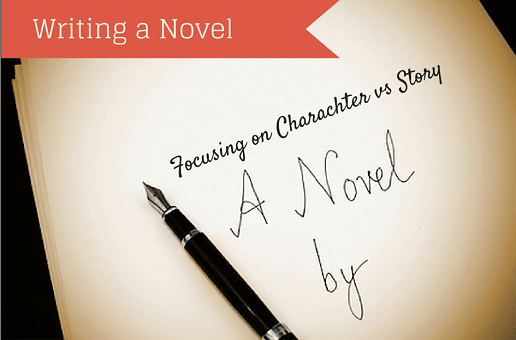Plot vs. Character – Which Side are You On?

July 14, 2015
Among novelists and critics of novelists (well, movies and TV shows too), there seems to be an ongoing discussion of the relative values of plot-driven works and character-driven works. If you are an aspiring or new novelist, then you should probably learn a bit about these two aspects of story-telling, identify which is your favored aspect, and perhaps learn a bit about weaving the other aspect into your novels.
The Plot-Driven Novel
These novelists are far more concerned about the story line than the characters necessarily. They develop their plots in a very organized, sequential manner, using outlines and storyboards, until they believe they have an engaging and compelling tale. The characters are dropped in after the plot is finalized. Plot-driven novelists tend to be more left-brained logical thinkers, and when they develop a really great story, it’s a best seller. Let’s take a brief look at the details of plot-driven novels.
- The conflicts are external. Think for a minute about the Star Wars series. You can probably name all of the major characters in each of these episodes, but the basic conflict in quite external – the rebels fighting the Empire. Oh, there may be a few internal conflicts here and there, but they are minor and fully secondary to the overriding one.
- The story is about some “thing” not some “person.” Consider Steven Spielberg’s Jaws or Jurassic Park or some of the works of contemporary novelist Nelson DeMille, such as Up Country. The plot is what makes these books (and eventually movies) such page-turners, not the characters.
- The novels are “action-packed,” with event after event, with twists and turns, and with surprises. In these plots, the characters move through rather quickly, making rapid choices and then moving on to the next circumstance. They are rarely fully developed people with lots of “layers.” They may fall in love, they may have a change of heart, but they are not central to the plot. The Indiana Jones series is a clear example of an extreme plot-driven novels (and then movies).
The Character-Driven Novel
These novelists focus above all else on one, maybe two, highly developed characters who are complex and have many layers that continue to be peeled back as the story progresses. Authors of character-driven works do not necessarily spend the time on outlines and storyboards. Instead, the focus on a character and what they want that character to do, say, and behave like, and then they develop the plot around that. Character-driven novelists tend to be more right-brained thinkers, and when they wow a reader with a character that is truly memorable, they have a best-seller. These details reflect a plot-driven novel.
- The conflicts are internal. Consider the character of Scrooge in Dickens’s A Christmas Carol. The plot is merely the backdrop for the major changes that occur within Scrooge as he grapples with the person he has become and the person he should be. All other characters are minor, and, quite frankly, the plot could have been quite different scenario, set almost anywhere and anytime. But the character of Scrooge could not have been changed in any way.
- The story is about a “person” not a “thing.” J.D. Salinger’s Catcher in the Rye and F. Scott Fitzgerald’s, The Great Gatsby are classic examples of character-driven novels. Incidents and events are secondary to the conflicts and development of the characters. While not a novel in the purist of senses, the somewhat autobiographical novel, Girl Interrupted, is another more contemporary example of a character-driven work. Again the plot is secondary, but the main characters could not possibly change for the work to be so compelling and such a huge hit.
- The character-driven novels are not so much action-packed as they are about internal conflicts and change. A couple of contemporary and extremely popular novels that really reflect this are John Green’s, The Fault in Our Stars and Gillian Flynn’s, Gone Girl.
The Lucky Novelist
It is the lucky novelist who can combine plot and character and to find the perfect combination of a compelling plot line and a character that will never be forgotten. If you want to develop your “other side,” try the preparation for your next novel in the opposite. If you primarily write plot-driven novels, throw out the outlines and storyboards and dream up a great character, perhaps a combination of people you know, develop that character first, and them plop him/her down into a story line that you develop as you go. If, on the other hand, you are the character-driven writer, get out a storyboard and imagine a great story first, before you plop any character into it
Perhaps the best and most classical example of a novel that combine both plot and character equally is To Kill a Mockingbird. The plot itself was exciting – would the truth come out about the Ewell’s and would Tom be vindicated? How would Ewell react to being humiliated in court by Atticus? And, of course the climactic end scene when Boo becomes the hero.
This is also a character-driven story, however. Atticus himself experiences lots of inner conflict; Scout, who also narrates the story, grows immeasurably during the tale, and other minor characters experience some inner changes as well. In all, neither the plot nor the characters could be pulled and placed somewhere else for the novel to “work.” Harper Lee found the right blend and created a novel that will forever be read.



